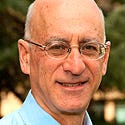Smart Cities: Power to the People
SDN and NFV are enabling a wide range of smart city programs around the world, notes ONF executive director Dan Pitt.
December 15, 2015

There's an interesting phenomenon afoot -- the growing list of "smart city" initiatives. Around the globe, cities large and small are adopting "smart" technologies, including high-speed optical networks, Internet of Things (IoT), SDN and NFV in order to enhance the livability, sustainability and efficiency of their communities.
Cities' residents are driving many of these initiatives to enhance public services, which run the gamut from arts and cultural projects to improving air quality, transportation, energy, wellness and water use. It's exciting that SDN and NFV are helping to democratize technology and power services that positively affect people's lives.
For example, SDN's flexibility makes it possible for smart cities to offer creative, highly granular services to their residents, businesses, and industries, leveraging applications written by and for diverse groups of users. SDN and NFV also make it possible to deploy city-scale networks by supporting load balancing, service chaining, network-level data security and bandwidth reservation.
Likewise, IoT devices and machine-to-machine communication play a crucial role in smart cities. For example, security cameras, smart utility meters, sensors and other IoT devices can collect data on everything from traffic and weather patterns to energy use, water consumption, and carbon dioxide levels. This data is typically transmitted to a central processing "hub" where it can be analyzed and used to pinpoint water leaks, alleviate traffic congestion, facilitate parking, improve air quality and even allocate bandwidth to a stadium to enable live streaming of an event.
Shimmying under the streetlights in Bristol
This summer I had the pleasure of traveling to Bristol, UK, which has embarked on one of the most advanced smart city programs in the world. Through a joint venture between the Bristol city council and the University of Bristol, dubbed "Bristol Is Open," this city is harnessing digital connectivity and smart technologies, including SDN and OpenFlow, to meet its environmental, social and economic challenges, as well as to create opportunities and support the creativity of its residents.
Already three fast networks have been installed in the city center to carry data from a variety of sensors, including smartphones and GPS devices of willing participants. A city operating system, developed by Professor Dimitra Simeonidou and colleagues in the University of Bristol's High Performance Networks research group, will dynamically host this machine-to-machine communication.
I was there to attend a workshop titled 'The Software Defined Network -- Programmable City,' co-hosted by Bristol Is Open and ONF. Given the city's reputation as an arts and cultural center, I marveled at a demonstration of a video application that depicts the shadows of people dancing under streetlights (it removes the images of the actual people, creating an ethereal effect). The opportunity to find such a streetlight and dance under it spread virally and elicited spontaneous joy. This application highlights the way smart cities can improve residents' -- and visitors' -- quality of life and build community.
Open data access is a key part of Bristol's smart city project, allowing residents, researchers and developers to analyze and share information in order to develop new solutions to the city's problems. Having an OpenFlow-based, SDN-controlled infrastructure will also help innovators "learn how to program and deliver new smart city experiences," says Simeonidou, who is also chief technology officer for Bristol Is Open and an ONF Research Associate.
Smart cities = smart growth
Another smart city program in the UK is being undertaken in Milton Keynes, one of the country's fastest-growing major towns. This growth is posing a variety of problems, one of which is parking. Joining forces with The Open University, BT Group plc (NYSE: BT; London: BTA) and other partners, the Milton Keynes Council formed a smart city collaboration to help support the city's expansion while meeting spending and carbon reduction targets.
The council estimates the city will need some 12,000 more parking spots by 2020, a 50% increase. One goal of their smart city project is to identify free spaces and send that information to roadside displays and smartphone apps to guide drivers to available parking. Maximizing use of existing parking facilities will save the city an estimated £105 million (US$159 million) by reducing the need for new infrastructure, as well as reducing fuel use and emissions from vehicles searching for parking.
An initial pilot was launched to manage short-term parking spaces at the city's railway station. Sensors installed in each parking bay detect a vehicle's arrival and departure and send that information wirelessly to lamp-post mounted, solar-powered repeaters, which in turn aggregate the data and transmit it over the Internet to a data hub hosted by BT. Once processed and analyzed, the data is made available on the Milton Keynes Council public information dashboard, as well as via a browser that displays a parking bay's status as red (occupied) or green (free) via an overlay to Google Maps.
The pilot was a success: The city council was able to set an appropriate parking time limit at the train station and proved the feasibility of city-wide parking space optimization.
US smart city programs take off
Smart city initiatives are also popping up across the US. A key player behind these projects is US Ignite (a joint venture of the National Science Foundation and the White House Office of Science and Technology Policy), which is bringing together partners in industry, academia and government to help create next-generation Internet applications that provide transformative public benefit. ONF has already partnered on a workshop with US Ignite.
Application development is focused on six areas deemed of national priority: education and workforce; energy; health; public safety; transportation; and advanced manufacturing. During the next five years, the US Ignite partner ecosystem is expected to deliver dozens of applications across some 200 community test beds.
As with other smart city efforts, US Ignite developers are leveraging high-speed, low-latency networks (key to handling multiple bi-directional streams of uncompressed video), as well as SDN and OpenFlow. SDN will improve control over network routing and optimization, enable use of virtual network "slices" matched to application requirements and support distributed programmable resources throughout the network.
Smart city initiatives bridge a surprising array of constituencies and provide a rich proving ground for the IoT. ONF is excited to be helping build these bridges.
— Dan Pitt, Executive Director, Open Networking Foundation
Read more about:
EuropeAbout the Author(s)
You May Also Like












